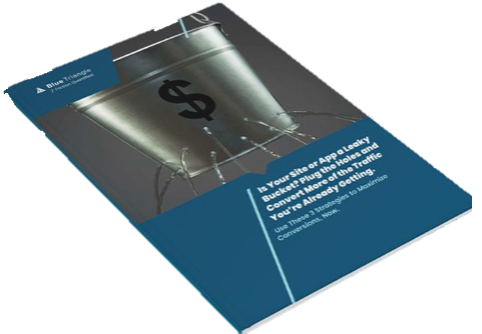JavaScript tags are constantly added to sites and apps by multiple teams. But over time, poor tag management can result in a dumping ground for outdated tags and daisy chaining tags.
Unrestricted third-party content can also lead to serious problems that could cost companies lost revenue and expose them to security and compliance risks.
Building, implementing, and managing a Content Security Policy (CSP) can help you understand and control all of the third-party content running rampant across your digital properties.
It plays an important and often misunderstood role in safeguarding your sites and applications against online threats, while also protecting your brand and customers.
Not only does a CSP help protect your site from data breaches caused by cross-site scripting (XSS) and formjacking attacks, but it can also prevent client-side malware from injecting unwanted ads on your site causing friction in your customers’ digital experience.
Sounds pretty straight forward, right?
This is often where the easy part ends and the questions begin.
CSP can be a complex topic. So, let’s set the record straight on a few CSP myths.
Myth 1: A CSP Only Prevents Cross-Site Scripting (XSS)
True, Content Security Policies were created to address and mitigate a specific type of web security threat known as Cross-Site Scripting (XSS).
XSS is a vulnerability that allows attackers to inject malicious scripts into web pages viewed by other users. These scripts can then execute in the context of the victim's web browser, potentially stealing sensitive information, manipulating the user's session, or engaging in other harmful activities.
By enforcing a CSP, web applications can define which scripts are allowed to execute and which sources are considered trustworthy. Any attempt to inject malicious scripts from unapproved sources is blocked, reducing the risk of XSS attacks.
However, the protective powers of a CSP extend far beyond that. By restricting content sources, a CSP defends against poor site performance, undesirable third-party content, browser hijacking and ad injection, and unauthorized piggyback tags resulting in compliance risks.
Myth 2: A CSP Breaks Website Functionality
A CSP is designed to restrict the execution of scripts and other resources from untrusted sources. So, if the policy is overly restrictive or misconfigured, it can prevent legitimate scripts and resources from loading as intended.
However, a well-crafted, carefully implemented CSP will avoid disrupting the user experience and essential site functionality. In fact, a CSP can help improve poor site performance caused by forgotten and needless third-party content creating costly friction for customers.
Collaboration between security, development, and web operations teams is crucial to ensuring that your CSP is configured effectively. Leveraging an automated CSP Manager to build your CSP code can also prevent human code errors that can create problems.
Myth 3: A CSP is Only for Large Organizations or High-Risk Applications
A CSP is not limited to large enterprise websites; it can benefit websites of all sizes. It also has benefits on all webpages and not just pages that handle sensitive user data or transactions, such as check out pages.
While high-volume transactional sites may have more complex business and security needs for a CSP, all sites can reap the benefits of controlling third-party content, creating a safer user experience, and protecting brand reputation.
Even though revenue, trust and loyalty loss could be significant and potentially millions of customers exposed to risk, few companies actually have a CSP in place.
According to one source, only 2% of sites have implemented “perfect” CSPs. The vast majority of CSP implementation is missing key data or involves unsafe adoption.
Myth 4: Only Security Teams or Web Developers Should Care about CSPs
While a CSP might sound technical, it’s not exclusively for development or security teams. The significance and implications of a CSP extend across multiple stakeholders in an organization, including:
- Marketers are responsible for driving demand and delivering engaging and secure online experiences. CSP’s are essential for maintaining site performance and customer trust and loyalty, preventing users from being hijacked to competitive sites, and ensuring the content that customers see is always on-brand.
- Senior leadership, including C-suite executives, should care about CSPs and their impact on the organization's security posture, brand reputation, and business outcomes. Especially with the cost of a breach averaging $4.45 million!
- Security and compliance directors, managers, and professionals play a crucial role in defining security policies, ensuring regulatory compliance, and mitigating security risks. A CSP is a vital tool to protect sensitive data and maintain compliance with data protection regulations.
Myth 5: A CSP is a “Set It and Forget It” Solution
A CSP should not be treated as a “set it and forget it” security measure. It requires ongoing attention and maintenance to remain effective and avoid costly unintended consequences.
Sites are dynamically and continuously evolving, such as content being added and removed or undergoing script changes. Likewise, the Five Friction Forces are constantly fluctuating and new security threats emerge every day, so you must regularly assess your policy to strike a balance between security, site performance, and delivering frictionless user experiences.
The Truth About Content Security Policies
When it comes to adopting a CSP, here are the facts you need to know to harness its full potential:
- A CSP goes beyond merely addressing cross-site scripting (XSS) threats. It can protect you against other challenges, including browser hijacking and ad injection, fraud, and compliance issues.
- A robust, well-implemented CSP can improve site performance by mitigating the negative impact of third-party content and safeguarding users from disruptive experiences.
- In an era where data breaches and security threats affect companies of every scale, a CSP provides a valuable layer of protection against online vulnerabilities, and even from competitors siphoning traffic off your site.
- Recognizing the importance of CSPs across teams, from marketers and senior leadership to security and compliance professionals, will foster a holistic approach to driving secure, frictionless experience.
- Websites constantly change, new security threats arise, the Five Friction Force always fluctuate, and the user experience requires ongoing optimization. So, continuous adaptation and vigilance are essential to get the most out of your CSP and account for these many moving factors.
We can squash the rumors and put an end to these CSP myths. Watch Nick Paladino, Director of Product Engineering, race against the clock to create and deploy a robust CSP in a caffeinated challenge.
Grab a coffee on us and let's have a 15-minute chat about CSP.

During the holiday rush, every shopper matters
Optimize the customer journey before the eCommerce event of the year.

.jpg)

